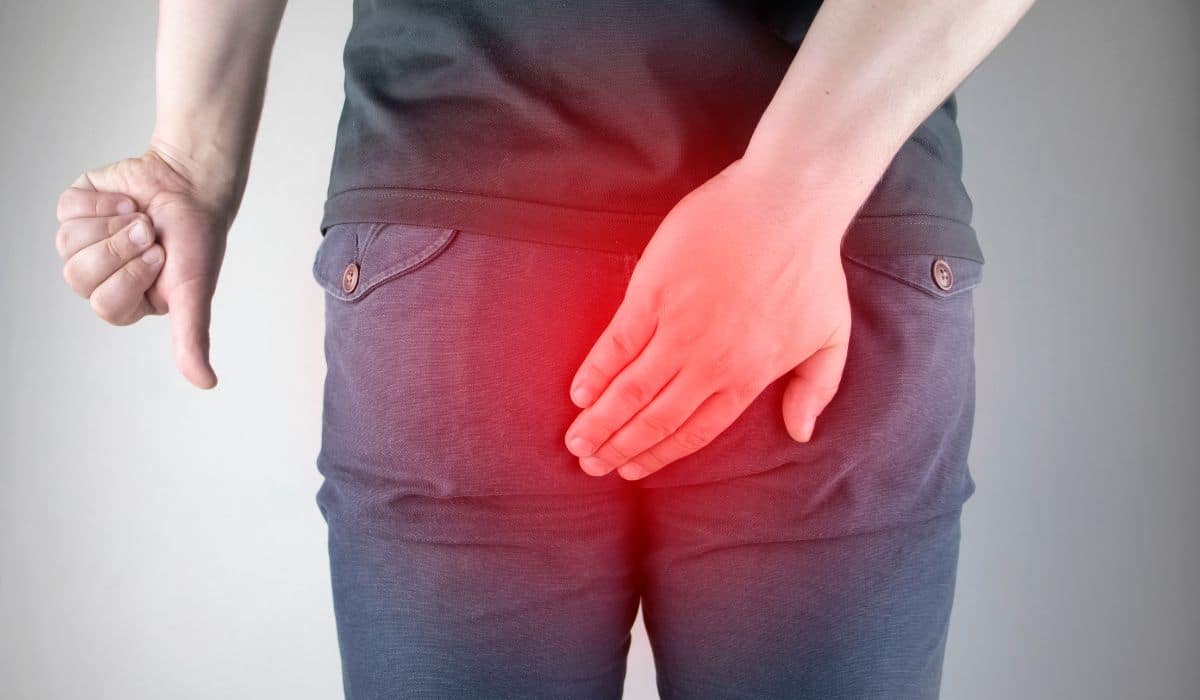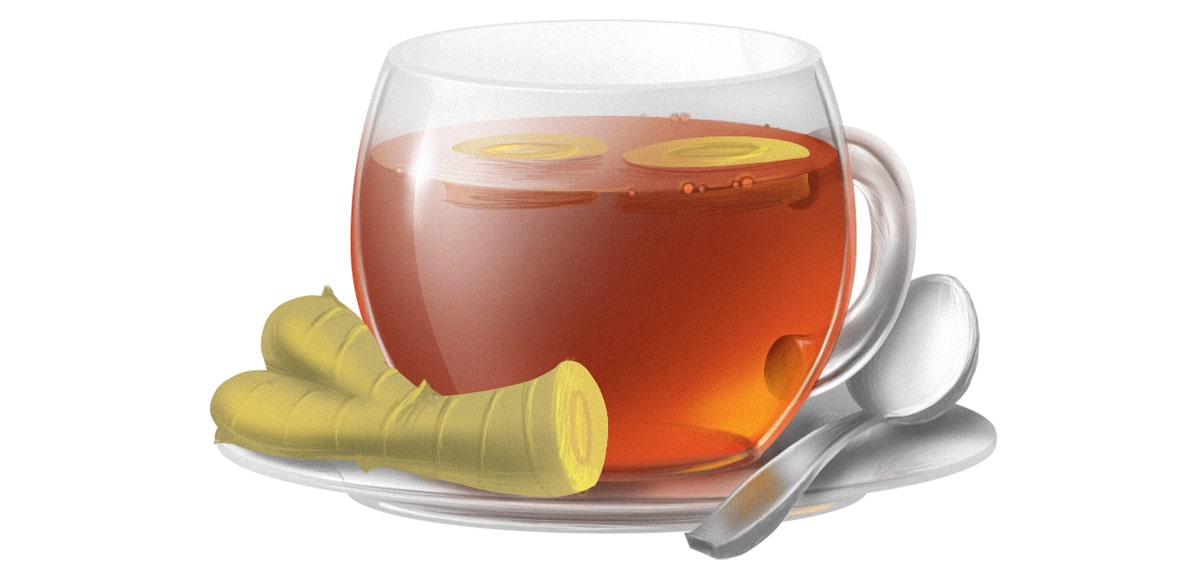
Warning: hemorrhoids are an inherently gross topic. Don’t read this one over lunch.
If you’ve ever had hemorrhoids and looked for a way to treat them with diet, you probably got one answer above all others: fiber. But actually, the relationship between fiber and hemorrhoids is very complicated. The fiber advice is based on the assumption that fiber helps treat constipation, but that’s not always true – some people actually get more constipated eating fiber. And there’s another relevant food component that nobody ever talks about, a group of plant antioxidants called flavonoids.
Here’s a more detailed look at diet and hemorrhoids that goes beyond the fiber-mania.
What Are Hemorrhoids?
Hemorrhoids: they’re not very pleasant, but they’re incredibly common: 3 out of 4 people will get a hemorrhoid at some point.
Technically, hemorrhoids are bulging or swollen veins in or around the anus.
- External hemorrhoids are veins around the opening of the anus, so when they bulge out, they’re visible outside the body.
- Internal hemorrhoids are hemorrhoids inside the anus. When they bulge out, they’re not visible, unless they prolapse (protrude so far that the vein dangles down through the anal opening).
Hemorrhoids aren’t usually dangerous, and they typically go away on their own (although they can come back). Some hemorrhoids don’t cause any symptoms at all, so they just show up and disappear without the person ever being the wiser. But for a lot of people, they can cause itching or pain, or blood in the stool, which is scary even if it isn’t actually dangerous.
For a hemorrhoid to develop, the connective tissue holding back veins in the anal wall has to somehow fail in a way that allows the veins to bulge out. There’s no one cause of hemorrhoids, and it’s not clear exactly how they develop but there are a lot of factors that make them more likely.
- Anything that increases pressure on the connective tissue anal walls, like straining to defecate because you’re constipated.
- Age-related weakness in the connective tissue of the anus.
- Pregnancy (which puts more pressure on the anal walls).
Is Fiber a Magic Cure?
When it comes to diet and hemorrhoids, the one thing you’ll hear from every quarter is fiber. The theory is that fiber will relieve constipation, so the person’s bowel movements will put less pressure on the anal walls, which will make existing hemorrhoids less painful and also make the person less prone to developing hemorrhoids in the first place.
It’s not like this idea doesn’t have any evidence. This 2005 Cochrane review studied the effects of fiber supplements in hemorrhoids. The review basically compiled a bunch of other studies and looks at all the evidence for a particular treatment. In this case, the authors found seven randomized controlled studies and overall concluded that fiber supplements were helpful:
- Patients assigned to fiber had a lower risk of persistent or recurring symptoms.
- Fiber was helpful after surgical or other interventions.
- Individual symptoms like bleeding and pain showed slight improvements in favor of the fiber.
There was no evidence that fiber was any better than a placebo for prolapse of hemorrhoids, or with itching. Fiber supplements were mostly used in patients with less severe hemorrhoids, and there’s not a lot of evidence about patients with more serious problems. The authors also noted that the small number of trials made it hard to test for bias.
So far, so much evidence for Metamucil. But this newer study (from 2015) shook the fiber connection up a little. The study looked at over 2800 colonoscopy patients to see what was associated with hemorrhoids. What they found was…
- On average, people with hemorrhoids ate the same amount of fiber as people without (around 15 grams/day), and took fiber supplements at around the same rate (5-6%). Adjusting for constipation didn’t change that.
- Constipation, straining, and hard stools were associated with hemorrhoids.
- Diarrhea or frequent bowel movements were not associated with hemorrhoids.
That puts a wrench in the idea that low-fiber diets cause hemorrhoids, or that high-fiber diets and fiber supplements prevent them. When the authors broke down fiber intake by type of fiber, they did find a difference in grain fiber intake between patients and controls, but it held constant even after adjusting for constipation. In other words, if the grain fiber actually was helping, it didn’t help by reducing constipation.
This basically fits with what we know about fiber and constipation, namely that it’s complicated. “Fiber” isn’t just one thing; the effects depend on the type of fiber. Some types of fiber are helpful for some types of constipation, but in diseases like Irritable Bowel Syndrome or functional constipation, many types of fiber can actually be worse than nothing at all.
The mixed results from fiber studies would be consistent with a pattern of fiber helping some people but not necessarily others. So instead of just focusing on fiber as some kind of magic cure, wouldn’t it make more sense to focus on whatever is causing constipation in the specific person involved? Constipation can come from all kinds of things. Sometimes it’s a gut flora imbalance. Sometimes it’s stress-related (your gut and your brain aren’t separate systems!). Sometimes it’s actually caused by too much fiber, or the wrong kind of fiber.
Flavonoids: Another Dietary Factor?
Another very interesting diet factor rarely gets mentioned at all, even though it’s an important potential confounder for the fiber connection: flavonoids. Flavonoids are a subcategory of polyphenols, or plant antioxidants. For hemorrhoids specifically, flavonoids are relevant because they help improve the flow of blood through the veins. In general, substances that do this are called phlebotonics, so flavonoids are one group of phlebotonics. This Cochrane review looked at phlebotonics for hemorrhoids. Phlebotonics were effective for…
- Itching
- Bleeding
- Discharge and leaking
- General symptoms of hemorrhoids

That raises the question: if taking flavonoids as supplements helps with hemorrhoids, could eating foods rich in those same flavonoids be a missing piece in the puzzle? It’s not clear. But it’s an interesting theory, and it might explain some of the complicated and conflicting results about fiber (since fiber-rich fruits and vegetables are also typically rich in flavonoids).
The category of “Flavonoids” includes a huge number of different antioxidants, so members of the flavonoid family are found in just about any kind of fruit or vegetable, and also in black and green tea.
Summing it Up
The research into fiber and hemorrhoids is more complicated and confusing than you might think. Fiber supplements have shown some benefit, but a recent study found no association between dietary or supplemental fiber and hemorrhoid prevention.
That makes sense when you remember that the major benefit of fiber is supposed to be in treating constipation (reducing constipation = less straining to defecate = less pressure on the wall of the anus = fewer hemorrhoids). But in fact, fiber has very mixed effects on constipation. In people who have functional gastrointestinal diseases, one very common cause of constipation, the wrong kind of fiber can even make things worse.
There’s also another food option that really needs to be explored in more studies on diet (not just supplements): flavonoids.
Putting all that together, from a Paleo angle it makes more sense to focus on managing constipation and improving vein health with whatever treatment works best for you. That might include fiber supplements, but for some people with IBS or FODMAP intolerance, it might mean reducing fiber, or eating only certain types of fiber. For people with slow-transit constipation, fiber might not have much to do with the problem at all. Research into flavonoids also suggests that they may actually help treat the real underlying problem, not just alleviate symptoms (for the low-fiber crowd, try black and green tea for fiber-free sources).
There’s more to constipation than fiber, and dietary therapies that treat hemorrhoids by addressing constipation need to take that into account.





Leave a Reply